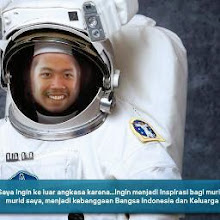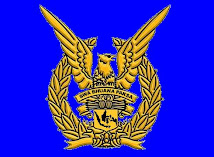|
 |
DAVID
BALTIMORE (b. 1938)
Caltech
President David Baltimore shared the 1975 Nobel Prize in Physiology or
Medicine with former faculty member Renato Dulbecco and alumnus Howard
Temin (PhD ’60).
The three were recognized for research that led
to the identification of the enzyme reverse transcriptase, which allows
a molecule of RNA from a cancer-causing virus to change into DNA (thus
reversing the normal sequence of information flow) and then splice itself
to the DNA of a host cell. This discovery greatly expanded scientific
understanding of retroviruses—the most infamous of which is HIV.
Baltimore did his undergraduate work at Swarthmore College and earned
his doctorate at Rockefeller University. He later worked as a research
associate at the Salk Institute for Biological Studies in La Jolla, California.
He joined the MIT faculty in 1968, and was appointed a full professor
in 1972. After founding the Whitehead Institute for Biomedical Research
in 1982, he served as its first director until 1990.
Baltimore was president
of Rockefeller University from 1990 to 1991. Before becoming Caltech’s
president in 1997, he was the Ivan R. Cottrell Professor of Molecular
Biology and Immunology and the American Cancer Society Research Professor
at MIT.
Baltimore has also been a major figure in Washington as head of
the National Institutes of Health AIDS Vaccine Research Committee
|
 |
RENATO
DULBECCO (b. 1914)
Renato
Dulbecco shared the 1975 Nobel Prize in Physiology or Medicine with Howard
Temin and David Baltimore “for their discoveries concerning the interaction
between tumour viruses and the genetic material of the cell.”
Dulbecco was born in Italy, where he graduated from the University of
Torino, receiving his medical degree in 1936. In 1947 he joined his former
fellow student Salvador Luria at Indiana University in Bloomington, and
then moved on to Caltech in 1949.
At the Institute, he worked with Max
Delbrück on phages before moving into the field of animal virology.
Howard Temin was one of his graduate students, and their work started
his interest in tumor viruses. In 1962, Dulbecco went to the Salk Institute,
and in 1972 to the Imperial Cancer Research Fund Laboratories in London.
|
 |
HOWARD
MARTIN TEMIN (1934–1994)
Howard
Temin shared the 1975 Nobel Prize in Physiology or Medicine with Renato
Dulbecco and David Baltimore for their joint discovery of the enzyme reverse
transcriptase. Identification of this enzyme helped explain how certain
viruses transform the cells they infect into cancer cells.
While doing graduate work with Dulbecco at Caltech, Temin began investigating
how the Rous sarcoma virus causes cancer in animals. During these investigations,
he observed that the virus—whose essential component is RNA—could
not infect a cell if the cell’s synthesis of DNA was stopped.
After
receiving his PhD in 1959, Temin spent another year working with Dulbecco,
then joined the faculty at the University of Wisconsin in Madison, where
he continued his research. In 1964, he proposed that the virus caused
cancer by somehow changing its RNA into DNA, an idea that contradicted
the contemporary belief that genetic information could only pass from
DNA to RNA.
In 1970, Temin’s hypothesis was validated by his and
Baltimore’s identification of reverse transcriptase as the mechanism
whereby RNA is changed into DNA. Temin continued to teach and pursue research
at the University of Wisconsin for the rest of his career.
|
 |
WILLIAM
NUNN LIPSCOMB, JR. (b. 1919)
William
Lipscomb was awarded the Nobel Prize in Chemistry in 1976 for his studies
on the structure of boranes (boron hydride compounds), work which also
answered general questions about chemical bonding.
Boranes became important
in chemical research in the 1940s and ‘50s because of the need to
find volatile uranium compounds (borohydrides) for isotope separation,
as well as the need to develop high-energy fuels for rockets and jet aircraft.
To map the molecular structures of boranes, Lipscomb also developed x-ray
techniques that later found application in many other areas of chemical
research.
After graduating from the University of Kentucky in 1941, Lipscomb came
to Caltech to pursue graduate study. He received his PhD in 1946, then
joined the faculty of the University of Minnesota, where he eventually
became head of the physical chemistry division. In 1959, he left Minnesota
to become professor of chemistry at Harvard. He served as chair of Harvard’s
chemistry department from 1962 to 1965.
|
 |
ROBERT
WOODROW WILSON (b. 1936)
Robert Wilson shared the 1978 Nobel Prize in
Physics with Arno Penzias for finding the cosmic background radiation—new
evidence of the Big Bang, the explosion of matter that scientists theorize
created the universe.
Wilson attended Rice University as an undergraduate, then earned a PhD
from Caltech in 1962.
Starting in 1963, he worked at Bell Labs, where
he and Penzias conducted experiments in connection with the first Telstar
communication satellite. While tracking radio emissions from gases around
the Milky Way, they detected excess radio noise that seemed to be coming
from all directions at once.
After comparing notes with scientists doing
similar research at MIT and Princeton, they concluded that they had discovered
a universal thermal radiation field with a temperature of about 3 kelvins—a
remnant of the Big Bang.
Wilson has since continued to study and measure
various properties of interstellar molecules. In 1976, he became head
of Bell Labs’ Radio Physics Department.
|
 |
ROGER
WOLCOTT SPERRY (1913–1994)
Roger
Sperry was a corecipient (with David Hubel and Torsten Wiesel) of the
1981 Nobel Prize in Physiology or Medicine for their research on the workings
of the brain. Sperry was particularly recognized for discovering that
each brain hemisphere controls different kinds of functions.
Sperry studied English literature as an undergraduate, then received a
master’s degree in psychology from Oberlin College. He did doctoral
work in zoology at the University of Chicago, where he earned a PhD in
1941.
He taught at the University of Chicago from 1946 to 1954, then came
to Caltech as Hixon Professor of Psychobiology. Sperry was best known
for his studies of “split brain” patients—usually epileptics
whose corpus callosum (the nerve bundle connecting the two halves of the
brain) had been severed.
Using innovative experimental and surgical techniques,
he demonstrated that the brain’s right hemisphere is normally dominant
for such things as spatial awareness and musical comprehension, whereas
the left hemisphere tends to control verbal and analytical tasks. Sperry
taught and conducted research at the Institute until 1984, when he was
named emeritus.
|
 |
KENNETH
GEDDES WILSON (b. 1936)
Kenneth
Wilson was awarded the 1982 Nobel Prize in Physics for his work to construct
improved theories about the transformations of matter called continuous,
or second-order, phase transitions. His research led to a very general
and effective mathematical strategy for understanding how complex microscopic
behavior underlies gross macroscopic effects.
Wilson received his bachelor’s degree from Harvard in 1956. He then
came to Caltech to do graduate work with Murray Gell-Mann. He received
his doctorate in 1961. He worked for a year with the European Council
for Nuclear Research, then joined the faculty at Cornell University, where
he remained until 1988. Since 1988, he has taught at the Ohio State University.
|
 |
WILLIAM
ALFRED FOWLER (1911–1995)
Willy
Fowler shared (with S. Chandrasekhar) the 1983 Nobel Prize in Physics
for his work on nucleosynthesis, the process whereby the nuclei of lighter
chemical elements fuse to create heavier ones.
In groundbreaking work
in the late 1950s, he and his colleagues demonstrated that, starting only
with the hydrogen and helium produced in the Big Bang, all the elements
from carbon to uranium could be produced by the nuclear processes in stars.
After receiving his bachelor’s degree from the Ohio State University
in 1933, Fowler came to Caltech to study with Charles Lauritsen. He received
his doctorate in 1936, and remained at the Institute as a research fellow
until 1939, when he was appointed assistant professor.
He was named Institute
Professor of Physics in 1970, and emeritus in 1982. During World War II,
he carried out research and development on rocket ordnance and proximity
fuses for Caltech’s rocket project. More recently, Fowler studied
neutrinos (the subatomic particles released during nuclear reactions),
quasars, and pulsars.
|
 |
RUDOLPH
A. MARCUS (b. 1923)
Rudy
Marcus won the Nobel Prize in Chemistry in 1992 for his development of
a theory of electron transfer in chemical reactions. This work has increased
scientific understanding of a wide variety of fundamental processes, including
photosynthesis, corrosion, and cell metabolism.
Marcus, a native of Canada, was educated at McGill University in Montreal.
He received his PhD in 1946. He did postdoctoral research for the next
five years, then joined the faculty of the Polytechnic Institute of Brooklyn.
Marcus began in the 1950s to study the forces that govern electrons as
they move from one atom to another in chemical reactions, and first published
his ideas between 1956 and 1965.
In 1964 he moved to the University of
Illinois, where he spent 14 years with the division of physical chemistry.
In 1978 he came to Caltech as Noyes Professor of Chemistry, the post he
holds today.
Although not universally accepted until validated experimentally
in the mid-1980s, Marcus’s theories brought new order and method
to many different subspecialties of chemistry. His predictions about why
some chemical reactions proceed much faster than others were accessible
to both theorists and experimentalists, and helped sort out what had been
a mass of contradictory observations.
|
 |
EDWARD
B. LEWIS (1918-2004)
Ed
Lewis shared the 1995 Nobel Prize in Physiology or Medicine with Christiane
Nüsslein-Volhard and Eric Wieschaus for their research into “the
genetic control of early embryonic development.”
He was specifically
recognized for his studies of how genetic mutations in Drosophila fruit
flies affect the insect’s development.
Lewis received his bachelor’s degree in biostatistics from the University
of Minnesota, then came to Caltech to do graduate work.
He received his
PhD in 1942. He then studied meteorology at the Institute as an Army Air
Force cadet. During World War II, he served as a weather forecaster in
Hawaii and on board a ship outside Okinawa. In 1946, Lewis returned to
Caltech as a member of the biology faculty, and in 1966 was named the
Thomas Hunt Morgan Professor Biology. He became emeritus in 1988, but
still can be found studying flies in his campus lab.
Though focused chiefly
on Drosophila, Lewis’s work has helped expand scientific understanding
of development in other organisms as well. Of particular significance
were his discoveries about homeotic genes. These genes tell the initially
undifferentiated cells of an embryo where and how to form the many different
tissues and organs of the body, and are remarkably similar in all creatures—from
fruit flies to mice to humans.
|








































